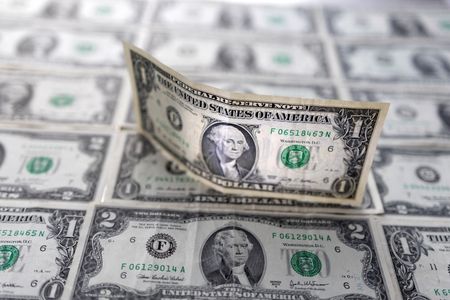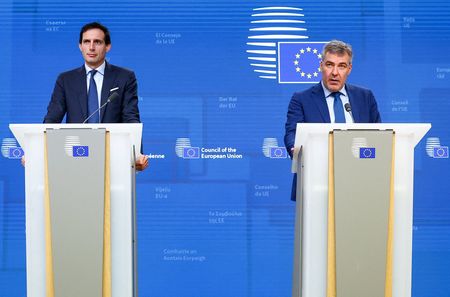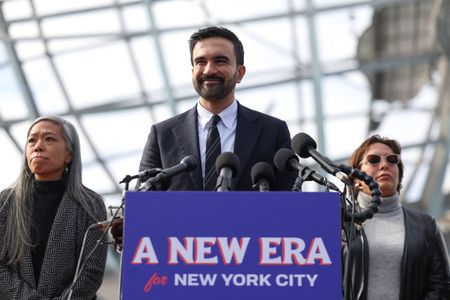By Sarupya Ganguly
BENGALURU (Reuters) -Traders will be net short on the U.S. dollar through November as the currency weakens over coming months on continued bets of multiple Federal Reserve interest rate cuts, a Reuters survey of foreign exchange strategists showed on Wednesday.
Rate futures are currently pricing three to four cuts by end-2026 on top of the two already delivered at recent FOMC meetings, even though Chair Jerome Powell recently suggested a December cut was anything but certain amid growing divisions within the Fed over future cuts.
Policy decisions have been further complicated by an unprecedented 36-day U.S. government shutdown that has stalled several key economic releases, leaving officials with limited visibility on the economy and increasingly dependent on private data and alternative indicators.
SOME SEE LESS-BEARISH POSITIONING AHEAD
With official positioning data from the Commodity Futures Trading Commission (CFTC) unavailable since late September, currency traders remain unsure how deep bearish dollar bets still run, forcing large banks to lean on alternative flow trackers and in-house models to infer positioning.
Two-thirds of strategists, 30 of 45 in an October 31-November 5 Reuters survey, predicted traders would be net short on the dollar at end-November, though some said positions will not be as bearish as they were when last published.
“So I would think once that data is released, I would expect positioning looks a lot less bearish than it was last looking. Our in-house proprietary indices where we try to gauge market positioning from a lot of other indicators tell us dollar positioning looks only modestly bearish – not as stretched as it was – inching more towards neutral levels,” said Jayati Bharadwaj, macro and FX strategist at TD Securities.
“From market price action and generally speaking to investors, I can see clients have been trying to buy dollars since the end of summer and into early autumn.”
Interest rate futures pricing implies a roughly 70% chance of a December Fed rate cut, down from nearly 90% before last week’s policy meeting, according to LSEG calculations.
That has cooled the ‘sell dollar’ trade without shifting the broader outlook. The greenback has since pared some of its losses, now down about 8% for the year from nearly 11% in September.
Still, strategists in the survey broadly stuck to earlier views, predicting the euro to rise a little under 3% to $1.18 in three months and to $1.20 in six.
The median year-ahead forecast of $1.21 has held mostly steady for four consecutive months.
That apparent caution in forecasting was also reflected in how respondents viewed the balance of risks. A slim majority – about 53%, 33 of 63 respondents – said the greenback was more likely to finish the year weaker than they predicted. The rest said stronger.
“Our forecast for 2026 and beyond is there will be increasing political influence on the Federal Reserve. That’s just the way it’s set up – that the White House gets more votes on the Fed Board the longer it’s in office,” said Vincent Reinhart, former Fed staffer and now chief economist at BNY Investments.
“But this White House is particularly more assertive about using that control. That’s why we predict the policy rate going pretty low and the dollar depreciating.”
(Other stories from the November foreign exchange poll)
(Reporting by Sarupya GangulyPolling by Indradip GhoshAnalysis by Jaiganesh Mahesh and Renusri KEditing by Hari Kishan, Ross Finley, Peter Graff)











